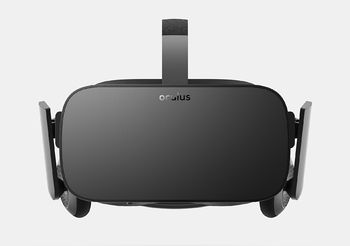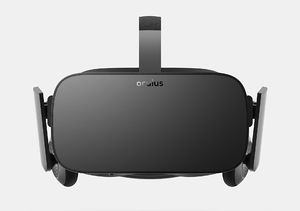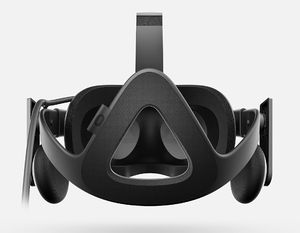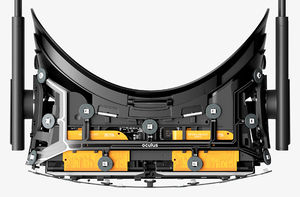Difference between revisions of "Rift"
Xinreality (talk | contribs) |
Xinreality (talk | contribs) |
||
| Line 30: | Line 30: | ||
==Hardware== | ==Hardware== | ||
| − | '''HMD Interfaces''': | + | '''HMD design and Interfaces''': |
The Rift HMD has sleek and refined design with improved ergonomics. [[IPD]] can be adjusted physically through the ''slider'' on the bottom, right side of HMD. Like previous editions, Rift supports [[eye-relief]] adjustments, allowing users to increase or decrease the distance between their eyes and lenses. Additionally, Rift will ship ship with multiple facial interfaces with different interior faceplates to accommodate various facial features and users with glasses. The faceplates are interchangeable. | The Rift HMD has sleek and refined design with improved ergonomics. [[IPD]] can be adjusted physically through the ''slider'' on the bottom, right side of HMD. Like previous editions, Rift supports [[eye-relief]] adjustments, allowing users to increase or decrease the distance between their eyes and lenses. Additionally, Rift will ship ship with multiple facial interfaces with different interior faceplates to accommodate various facial features and users with glasses. The faceplates are interchangeable. | ||
Revision as of 21:18, 14 June 2015

| |
|---|---|
| Developer | Oculus VR |
| Requires | PC |
| Operating System | Windows, Mac, Linux |
| Display | Dual 1080 x 1200 OLED Panels |
| Resolution | 2160 x 1200 (1080 x 1200 per eye) |
| Refresh Rate | 90 Hz |
| Image | |
| Optics | |
| Tracking | 6DOF |
| Rotational Tracking | Gyroscope, Accelerometer, Magnetometer |
| Positional Tracking | External sensor |
| Audio | Built-in headphones, external headphones |
| Input | Xbox One controller, Oculus Touch |
Rift also known as Oculus Rift CV1 or Consumer Version 1 is the 1st version of Oculus Rift Virtual Reality HMD created for consumers. Rift is scheduled to be released in Q1 2016. Unlike its predecessors, DK1 and DK2, Rift's target demographic moves beyond developers and serious VR enthusiasts to include people with only casual interest in VR.
Contents
Hardware
HMD design and Interfaces:
The Rift HMD has sleek and refined design with improved ergonomics. IPD can be adjusted physically through the slider on the bottom, right side of HMD. Like previous editions, Rift supports eye-relief adjustments, allowing users to increase or decrease the distance between their eyes and lenses. Additionally, Rift will ship ship with multiple facial interfaces with different interior faceplates to accommodate various facial features and users with glasses. The faceplates are interchangeable.
Tracking:
Tracking is improved from DK2 and Crescent Bay. While rotational tracking is achieved with IMUs, positional tracking is accomplish with an external sensor camera (outside-in tracking). Tiny LED markers are placed on the HMD, the sensor camera is able to recognize these markers and track the position of the HMD. Oculus has promised for both seated and standing VR experiences.
External sensor camera:
External sensor camera is not only able to track the headset but also Oculus Touch. Brandon Iribe has mentioned that other hardware manufactures can cover their own devices with the LED markers so they can be tracked too.
Voice and Audio:
Rift will have a microphone and built-in headphones. Users can replace the headphones with their own audio devices.
Specifications
System Requirements
Recommended
- GPU: NVIDIA GTX 970 or AMD 290, equivalent or greater
- CPU: Intel i5-4590, equivalent or greater
- RAM: 8GB+
- Windows 7 SP1 or newer
- 2x USB 3.0 ports
- HDMI 1.3 video output supporting a 297MHz clock via a direct output architecture
Setup Tutorial
Input Devices
Xbox One controller - comes with every Rift
Oculus Touch - unique controller released after Rift's release
Apps
VR Apps from Oculus Share and Oculus Store.



